Backblaze B2 Vs Wasabi: Top Four Comparisons in 2023
Backblaze B2 Vs Wasabi: Top Four Comparisons in 2024
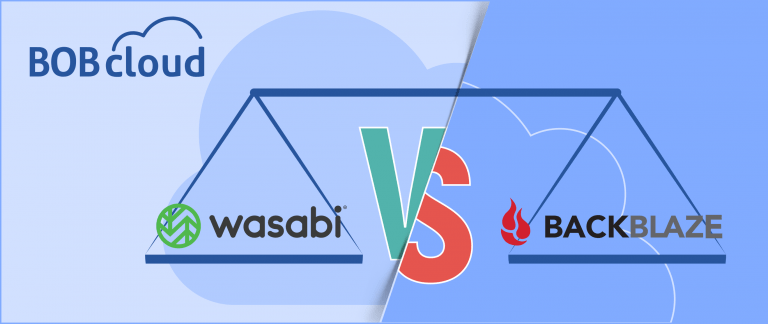

Table of Contents
Are you considering using S3 object storage from Wasabi or Backblaze B2?
This Wasabi and Backblaze B2 object storage review compares the speed, price and overall functionality of the Wasabi and Backblaze B2 object storage platforms. Backblaze and Wasabi look the same, but you’ll be surprised how different these object storage titans are under the covers.
Cloud storage price comparison. A quick comparison of Backblaze B2 and Wasabi’s pricing costs shows a similar pricing structure based on 1TB of storage.
There are some additional costs and restrictions with Wasabi and we’ll cover those later.
Backblaze was, until the summer of 2023, charging you a whopping $10 to download 1TB of your data.
Wasabi has never charged you to download your data, provided you don’t download more than 1x of your stored data. A reasonable fair-usage policy to keep file sharers off their network.
Fast-forward to summer 2023, Backblaze has removed its egress charges and now offers a lower cost per GB than Wasabi. Partially helped by Wasabi’s recent 15% price increase to $6.99 for storing 1TB of data.
At the same time, Backblaze has increased the price of its B2 storage from $5/TB to $6/TB.
For now, comparing like for like, they are very similarly priced.
We manage more than 1PB of reseller storage on both platforms and provide support for both whilst understanding their pros and cons.
This review compares both in a live environment and reports on performance, speed and technical ability.
Our NOC Engineers have fully evaluated the services’ performance, speed and technical ability, and our reseller feedback has helped us calculate the overall score. We only write about system we use ourselves.
Just want to see the results?
How we embed Wasabi and Backblaze B2 into our service
We have embedded Wasabi (UK and EU regions) into our cloud backup software since early 2019 and B2 more recently.
Backing up to either location is quickly done from the storage destination tab within our software.
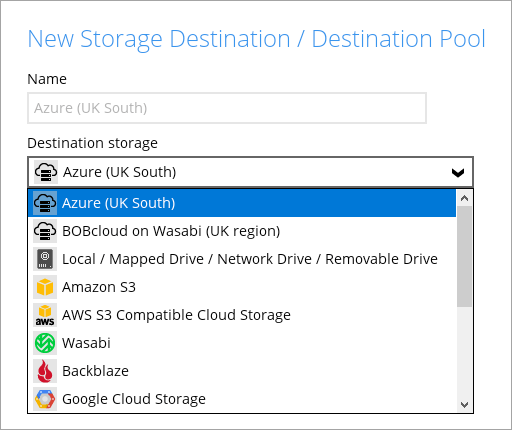

We have hardcoded the region and access details into the connector, making this a one-click process.
We recommend both systems to our online backup resellers who want to use their accounts with Wasabi or Backblaze.
Wasabi Technologies, Inc. is a dedicated S3 object storage provider, making them experts in cloud storage.
David Friend and Jeff Flowers founded Wasabi, and it launched its first hot cloud storage service in May 2017.
You might not know their names, but you will know the companies they owned, Carbonite, Mozy, and Webroot being the more prominent names.
Backblaze is another of the big names in cloud storage and online backups and was founded by Gleb Budman and Brian Wilson in 2007.
They started providing cloud backup in 2007 and now offer object storage on their B2 platform. Backblaze launched B2 in 2015, two years before Wasabi turned on its first server.
Backblaze’s pricing has always been low, and that is in part due to their dense storage architecture. Since 2009, Backblaze has been famous for sharing the design and concept of its storage pods. If you love all that (we do), check out their pod blog here https://www.backblaze.com/b2/storage-pod.html
What is Backblaze B2?
Backblaze is one of the most prominent players in the cloud storage and backup space, and they have played on their expertise by providing object storage based on the S3 format as a separate service to techies.
They named their object storage service B2 to differentiate their backup product from their object storage service.
Data availability and durability with Backblaze B2 and Wasabi
We evaluate two metrics when we use or recommend a new storage platform. These are data availability and data durability, and they are very different.
Data accessibility encompasses two distinct aspects: availability and durability.
These two facets hold divergent meanings and play separate roles in ensuring efficient data management.
What is Data availability?
Data availability refers to the system’s operational status and ability to provide requested data promptly. It is frustrating when an e-commerce platform goes offline, implying the service is down.
When the system returns online, it should be business as usual.
Data availability: Means.... is my email, website or application down?
What is Data durability?
Data availability refers to your data. i.e., will it always be there, even if the system is unavailable? You want your data to be safe following a system outage. If a system is unavailable, it should always maintain the integrity of the data it manages.
Inside every storage system are hard disks, and these will fail. This failure is no reason for a loss of data though. A fundamental concept to overcome data loss is storing multiple copies of data on three devices with a location.
Servers will run a version of RAID that will continue operating and maintaining data integrity if one disk fails.
This process is replicated within data sets and storage arrays that store data. Not only can they survive the loss of multiple disks, but they can also withstand an entire disk array failure.
Taking this a step further, any modern system will allow you to replicate your data to other sites.
Microsoft does this seamlessly on their Azure platform and calls these services LRS (locally redundant storage) and GRS (geo-redundant storage). AWS has the same, and Wasabi implemented Bucket replication between regions in May 2023.
Data Durability: This means will my data be recoverable?
Data durability has to be rock solid forever. The idea that someone can lose a file in the AWS, Wasabi, Backblaze, or Microsoft clouds is not an option. They have too much riding on their reputation to ever lose a customer’s file.
The metric we use to measure near-perfect data durability is 11 nines. This is easy to achieve with prior planning when using object storage.
Object storage is a term that software developers will be familiar with, and end-users don’t need to worry about. Object storage works and keeps your data safe and secure.
Object storage is typically called S3 or Azure Blobs on Microsoft’s cloud.
The goals served by availability and durability differ significantly. Availability, a vital metric for data centres, measures uptime and operational continuity, as any downtime can result in substantial financial repercussions.
This metric explicitly evaluates the accessibility of the storage system. What occurs when a component, system, or entire data centre experiences an outage? Will your data remain intact once the issue is resolved?
This highlights the crucial importance of data durability. When rectifying an availability issue, restoring access to uncorrupted data is imperative.
With the exponential growth of data creation, the immense potential for data mining, and the escalating demand for extended data retention, durability becomes paramount for achieving sustained business success.
Consider the consequences on competition, finances, and even legal matters when the archived master or reference copy of data becomes irretrievable. Hence, data availability and durability are indispensable for ensuring short- and long-term prosperity in business endeavours.
Backblaze and Wasabi price differences
Putting their near-identical tech specs and S3 compatibility aside, pricing has to factor in when choosing a cloud storage provider, with all other aspects equal.
Quick monthly price comparison between Wasabi and Backblaze B2
There is little difference in the baseline cloud storage pricing between Wasabi and Backblaze B2 object storage when using more than one TB of storage.
If you need less than 1TB of storage, then Wasabi might not be a good fit because they charge for a minimum of 1TB of data. Even if you don’t store any data, they will still bill you for 1TB though.
When you start scaling up your business, you will see the differences when large amounts of data need to be stored and downloaded because downloading will incur egress charges.
Wasabi charges you a minimum of 90 days when creating a file. If you are burning your data regularly, i.e. weekly full backups with a retention period of a month, then you will see that Wasabi’s storage costs will be three times more than Backblaze’s.
Monthly cost to store 1TB of data


Wasabi's 90-day minimum storage duration policy and monthly minimum storage charge explained.
When you save a file, Wasabi charges for the first three months of storage, and their minimum chargeable block is 1TB.
If you delete that file shortly after creating it, you will still be billed for three months.
Wasabi are honest about these price points on their website and make no effort to bury them.
By comparison, B2 gives you 10GB of free monthly storage, and they have no minimum charge.
Backblaze says Data stored with Backblaze is calculated hourly, with no minimum retention requirement, and billed monthly on their site. The first 10 GB of storage is free.
Backblaze removed their $0.01 per GB in August 2023.
Wasabi and Backblaze are keen to say they don’t charge for egress. They will allow you to transfer the same amount as your active data for free. If you have 100TB stored, you can download 100TB in one month for free.
Monthly cost to store and download 1TB of data
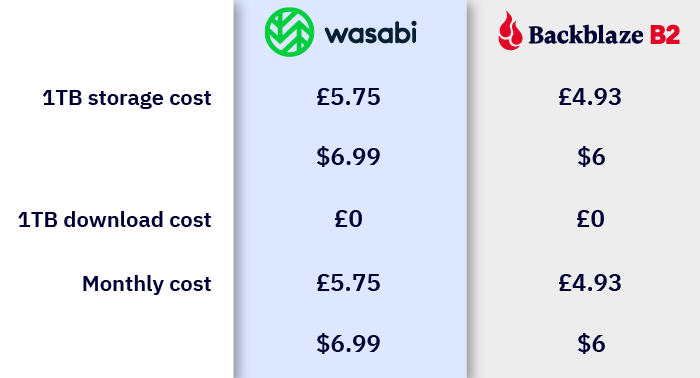

How does this affect your cloud storage costs in a production environment?
If storage is your primary business, and your data is inbound (ingress), then either service will be comparable in price.
If you transfer out less data than you have stored, Backblaze B2 is the lowest-cost option.
Our test environment
Software
We tested using v9.7 beta of our cloud backup software on a Windows 2022 server.
Hardware
Cloud VPS with 8GB RAM. The server is in a data centre with respectable ingress and egress results below.
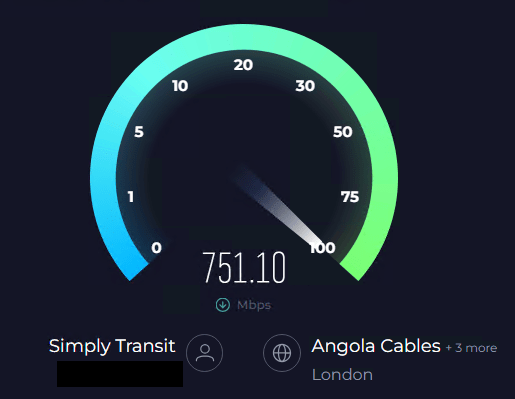

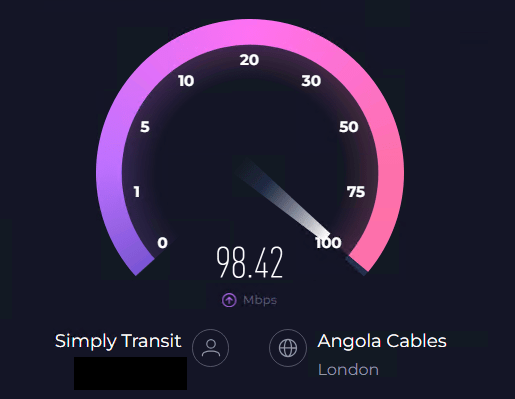

Sample data
180Mb of regular Windows files. Small files create much more overhead when backing up when compared to large single files. This is the same with any backup (local or cloud).
Wasabi and Backblaze storage regions
Wasabi in London (UK) and Syndey (Australia).
Backblaze B2 in Amsterdam (Holland).
We also tested IDrive e2 in London (UK) because they offer exceptionally low pricing.
Wasabi and Backblaze upload speed test results
The Wasabi test ran between our location in the UK and Wasabi’s data centre in London (Equinix).
The Backblaze test ran between our location in their data centre in Amsterdam.
We configured the backup set to run in concurrent mode, meaning the data was transferred to the four storage destinations simultaneously. This configuration was used for the purpose of the test.
The standard configuration is for the backup set to back up to one storage destination at a time.
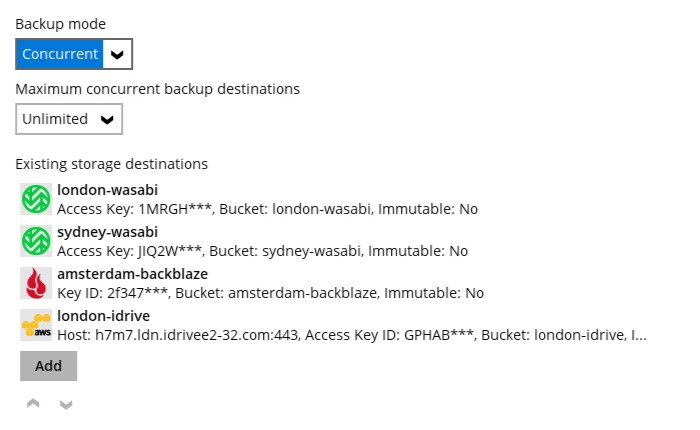

The results show the backup set transferred data quicker to the Wasabi London storage destination, with Backblaze Amsterdam not far behind.
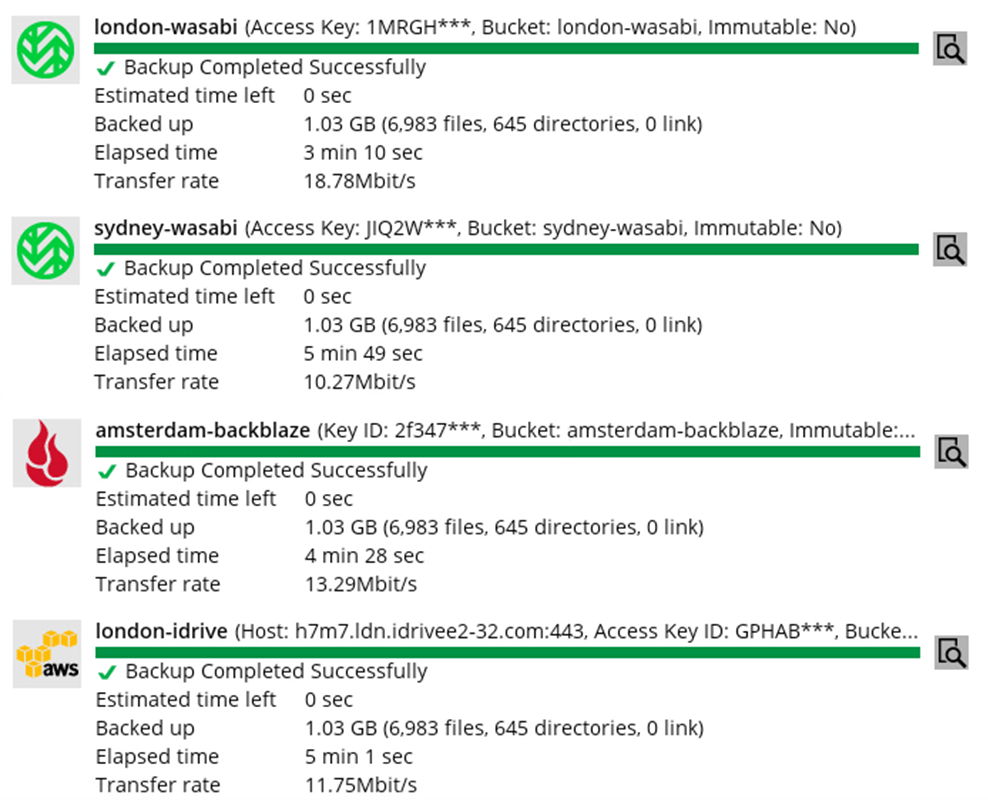

What do our Resellers say?
Feedback from our Resellers confirms that the outbound transfer speed when restoring data from Wasabi is excellent and surpasses their own internet connectivity. Therefore, Wasabi never produces a bottleneck during disaster recovery.
The results are consistent when run ten times (+ – 10%) and show a similar speed considering the distances to each service. This shows us the tech is the same, and only pricing separates them.
There is a gradual shift amongst our Resellers from storing data on Microsoft’s cloud in the UK to Wasabi and Backblaze, and this continues.
What if we switch the destinations around?
We don’t usually run backup sets in concurrent mode, so we thought we’d check if there is any bias in the storage destination orders.
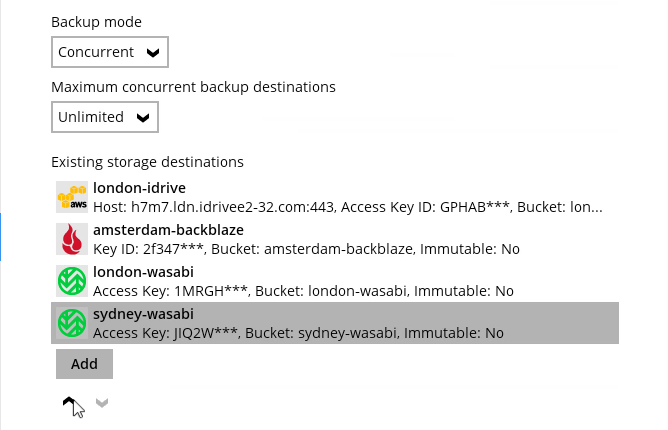

The results confirm that it doesn’t matter if the storage destinations are rearranged.
The backup set again transferred data quicker to the Wasabi London storage destination, with Backblaze Amsterdam not far behind.
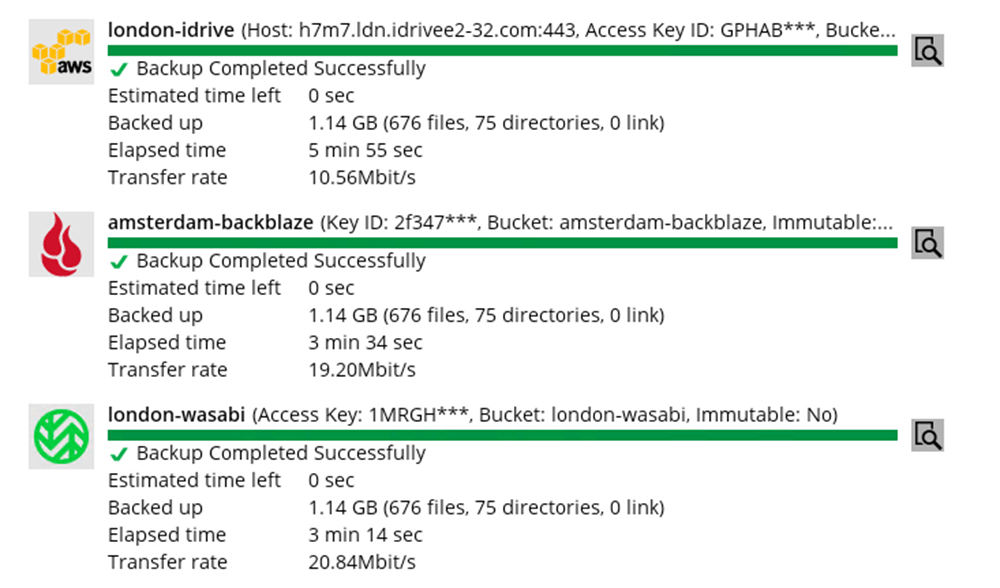

The results confirm that it doesn’t matter if the storage destinations are rearranged.
The backup set again transferred data quicker to the Wasabi London storage destination, with Backblaze Amsterdam not far behind.
All these tests show the IDrive e2 storage destination in London lagging behind the other two regarding ingress into their facility.
Wasabi vs. Backblaze. The Results


Wasabi Vs Backblaze. Who do our customers pick?
Microsoft, Amazon, and Google also tested
As you can see from the image below, once we start looking at the more prominent players like Microsoft, Amazon, and Google, the price difference for object storage (storing and downloading) is even greater.
Click on the image to read the full review. These are all based on the monthly cost to store and download 1TB of data.
Conclusion
Both Wasabi’s and Backblaze’s object storage platforms provide cloud backup providers with a secure and durable cloud storage service that is easy to connect to. They have adopted Amazon’s S3 object storage standard, which makes it super-easy for developers to work with them.
Since the price changes in Q3 2023, both services are now on a par.
IDrive’s e2 service considerably beats Wasabi and B2 pricing IDrive e2 pricing
All three services provide 11 nines of data durability.
If you have experience with either or have a question, post your comment below.


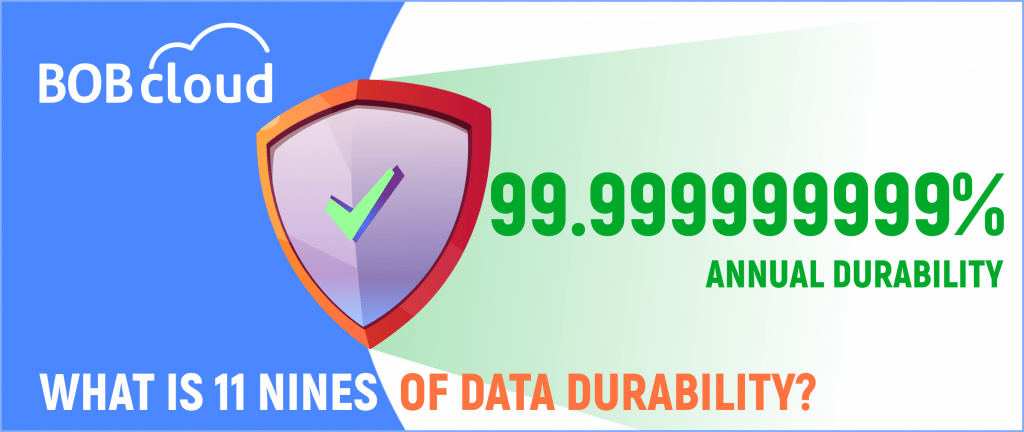
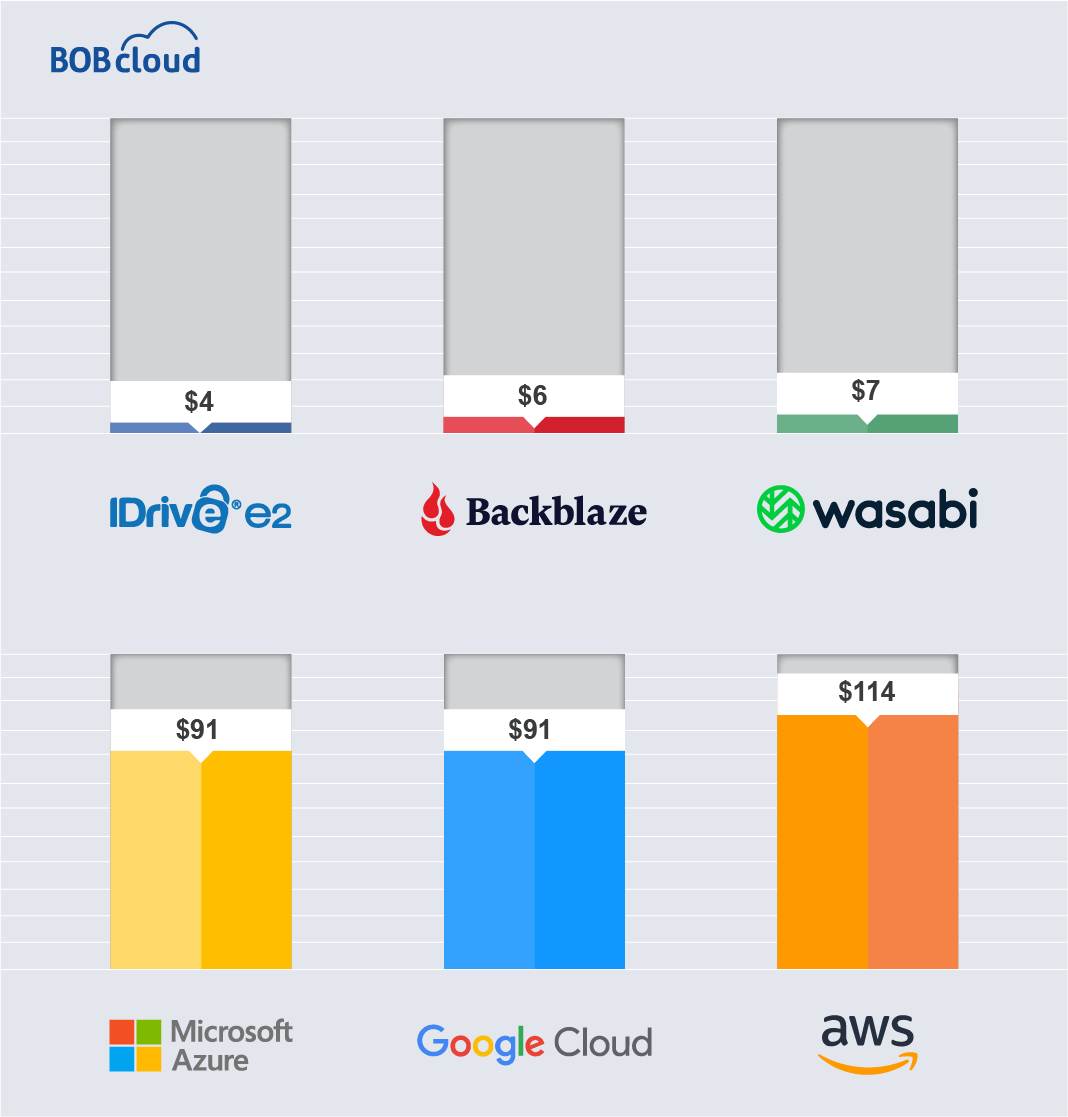
Hi there – Backblaze has an EU region as well as US West and US East – click the little region dropdown just underneath the big red “Sign Up Now” button at https://www.backblaze.com/b2/cloud-storage.html to select your preferred region.